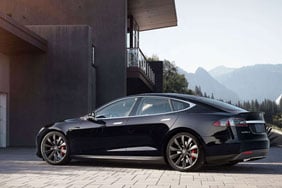Smart home devices are domestic gadgets – such as lights or entertainment systems – that you control over the internet, usually using an app. In recent years, they’ve increased in popularity.
In 2020, YouGov found that 23% of households owned smart devices, such as speakers, thermostats, or home security systems. As of 2023, some studies say that number could be as high as 70%.
Many analysts think the pandemic contributed to this leap forward in smart device use. Stuck at home, many people decided to spend their money on smart devices to make home life more comfortable and entertaining.
But as homes become more connected than ever, what does this mean for insurance?
Right now, smart home insurance—which uses smart devices to decrease premiums and mitigate risk—remains a niche market. But there are signs that they’re increasing in popularity.
In a 2021 survey from GlobalData, 4 in 10 respondents said they’d be willing to share their smart device data with insurers.
So, what’s the future of smart home insurance, and will we see it become mainstream any time soon?
What are smart home devices, and where does insurance come in?
Smart home technology includes any domestic device or system that connects to the internet and that consumers can monitor and control remotely. This could be via an app or voice control.
The most common smart technologies are entertainment devices, such as smart TVs and speakers. Consumers can request a song or radio station or buy products by voice using a device like Amazon's Alexa.
However, entertainment devices aren’t the only tools that are part of the smart home technology industry.
According to a TechUK survey, these are some of the most popular smart devices in British homes:
- Smart TV (61% of consumers have them)
- Smart speakers (40%)
- Fitness trackers and other wearable devices (25%)
- Smart thermostats (14%)
- Smart plugs (13%)
- Smart lighting (12%)
- Smart doorbells (11%)
- Smart detectors (10%)
- Motion camera sensors for external doors/windows (10%)
- Internal cameras for babies, pets, and security (9%).
Each device fills a specific need and collects a wealth of data that could be useful for insurers.
For example, fitness trackers monitor heart rates, step counts, and sleep quality. This can give a better view of your health to your health insurance provider. This is a tactic that brands like Vitality Healthcare use well. The more active you are, the more rewards you get.
In general, insurers could use the data from smart devices to determine risk more accurately and offer lower premiums.
What is smart home insurance, and how can it be used?
Smart home insurance is where the insurer gives smart devices to the customer directly as part of the insurance policy.
For example, leak detectors can alert the homeowner if there’s a water leak, reducing the risk of damage and the claim size.
Smart devices in the home promise to reduce risk through 2 main uses:
-
Home security: Video doorbells and motion sensors can monitor who’s outside a user’s home, alert them to any movements, and show what’s happening in real-time. Overall, this should boost security, reduce intrusion risk, and, therefore, lower claims.
-
Physical risk: Other devices reduce the risk of fire or water damage - the most common (and most expensive) cause of insurance claims. With sensors installed beneath water tanks, customers can get live alerts about leaks. And if they discover leaks early enough, consumers can take action before a repair or claim is even necessary.
Even though the benefits of smart devices are clear, and many devices are undeniably mainstream, smart home insurance isn’t. Recently though, more providers are coming to market with it.
But how will they make it a success, and bring it to the mainstream?
What are the challenges to smart home insurance becoming mainstream?
The benefits of smart home insurance to the consumer and insurer are fairly straightforward. Smart devices reduce risk, which ought to translate to lower premiums for the consumer and fewer claim payouts for the insurer.
But what’s stopping smart home insurance from becoming mainstream? There are a few obstacles:
The premiums are still too high
Premiums for smart home insurance are significantly higher than standard home insurance policies for customers.
This is because these plans include smart devices in the price: such as video doorbells, leak detectors, indoor cameras, and motion sensors.
With home insurance premiums reaching an all-time high this year, many consumers will be looking for the best value possible. The higher price of smart home insurance could put some consumers off.
The consumer might already have smart devices
Most UK households will have at least one smart device – whether it’s a doorbell camera, an Amazon Fire Stick, or a smart thermostat. Currently, most smart home insurance offerings on the market don’t allow you to use your own smart devices.
Would consumers who have already invested in smart devices be willing to buy a new policy that supplies them with equipment they already have? That remains to be seen.
To increase adoption of smart home insurance, we’d need to see insurers being able to gather data from devices that the customer already has.
Privacy is a huge issue for customers
According to a study by Adobe, 70% of consumers are concerned about how companies use their data in general. For smart home insurance to work, insurers need to be transparent about handling their customer’s data.
It also raises privacy issues for renters. Does a landlord have a right to buy smart home insurance, even if the renter doesn’t want data about their household shared?
Questions like these remain unanswered and insurers still don’t know how to approach transparency when it comes to managing customers’ data.
Insurers will have to invest in more data storage facilities
More data isn’t just a concern for consumers. With smart devices such as water, fire, and security monitors continually tracking information, insurance companies will have a massive amount of data to store.
This requires substantial infrastructure and means insurers will need to comply with data protection rules. That inevitably comes with additional costs.
Customers may not enjoy the flexibility they’re used to
Due to having to recoup the cost of the smart devices, many smart home insurance policies are run over 24 months.
And while this contract length works well for some consumers, certain demographics, such as renters, might not be willing to tie themselves down for 24 months.
What’s the future of smart home insurance?
While there are obstacles to widespread adoption and smart home insurers have struggled in the past, the industry seems to be changing. As more and more consumers become comfortable with smart devices, what might the future hold for smart home insurance?
1. Premiums are likely to come down
As the car insurance industry has seen with telematics, customers are only likely to accept sharing personal data with insurers if there’s enough benefit for them.
A 2022 study found that financial rewards would be the main reason over two-thirds of customers would share home data with insurers. Those rewards were even more important than “I feel it would help me protect my home” or “to keep my family and me safe”.
A decrease in premiums will likely result in greater adoption of smart home insurance. As smart devices become more common, overall costs should drop. And for those people who may buy the smart tech anyway, getting it alongside insurance may make financial sense.
2. Smart home devices could converge with other technologies to improve the home insurance journey
Smart home devices aren’t the only technology changing the insurance industry.
For example, Lemonade, a digital insurance company, is using artificial intelligence (AI) to fulfil claims faster than ever before. In some cases, they can settle claims in just 2 seconds.
There’s no reason to think AI and smart tech will remain separate in insurance. Instead, it’s easy to imagine a not-too-distant future where these technologies converge to make the whole journey of home insurance much more accessible for customers.
For example, smart leak sensors could mitigate the risk of home insurance claims by notifying customers the second there’s a leak. Then, if leaking water caused any damage, that same technology would share the necessary data to make a claim directly with the insurer. Then AI can come in to process and fulfil that claim.
Wonder how these innovations are communicated to customers? Check out our article on communicating the value of home insurance for insights.
3. How insurers manage smart home data will likely remain a challenge
Concerns around smart devices and data are likely to remain. The question is: How will insurers manage this? And just as importantly, how will they convince customers that their data is stored safely?
These questions take on a greater complexity in a changing regulatory environment.
For instance, new proposed rules in the European Union would make smart device data sharing easier across countries, something that may influence legislation elsewhere.
According to the EU, these rules respond to the issue that “it’s often not clear who can do what with the data” collected by smart devices. Often, manufacturers claim exclusive rights to the data.
It’s no doubt a tricky issue, not least for insurers. If smart device manufacturers own the data, how will insurers be able to access and use it? And what rights do consumers have?
Greater clarity – even in the form of legislation – is necessary to help solve the issue of smart device data management and storage.
What’s the role of Confused.com and other comparison sites?
At Confused.com, consumers can already access a smart home insurance policy with smart devices. But the market is still fairly small.
As smart technology develops and smart home insurance becomes more appealing, our role will have to evolve.
At Confused.com, we could take a position where we issue the smart devices ourselves rather than insurers. This way, we’d deepen our role as intermediaries between insurers and customers by owning the technology and passing relevant data to insurers.
I could see us playing a significant role in increasing the compatibility of smart technologies across the industry and navigating some of the complexities of data management. With one tech provider, all industry data would be standardised.
If smart home insurance is to become mainstream, the costs must come down
There are many challenges to overcome until smart home insurance becomes mainstream.
Perhaps most importantly, costs have to come down for policyholders. Customers are clear that they’d be willing to share their data only if they were to benefit financially.
But smart home tech can potentially reduce risks, claims, and costs—for insurers and customers. And along with other AI-powered tools, it could well revolutionise the industry.
To stay on top of what’s happening in the insurance sector, head to Confused.com’s website.







